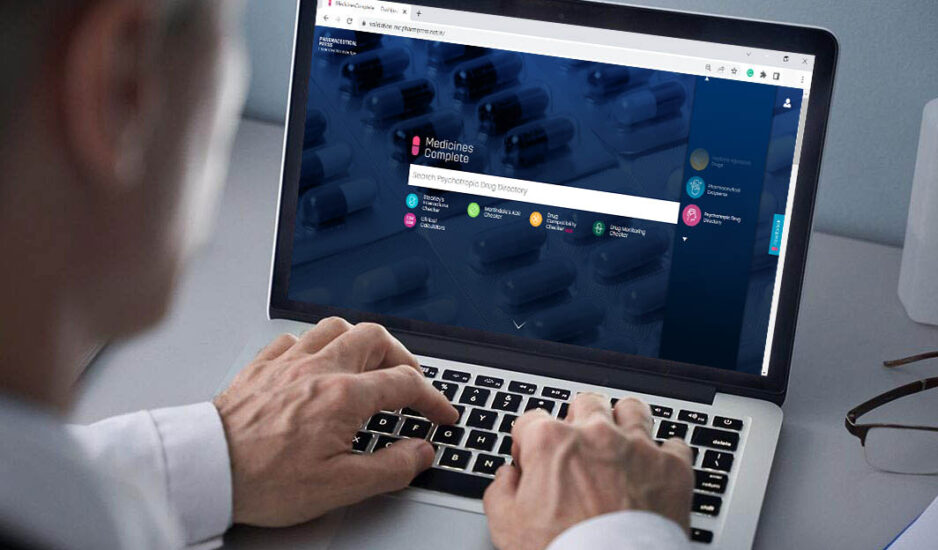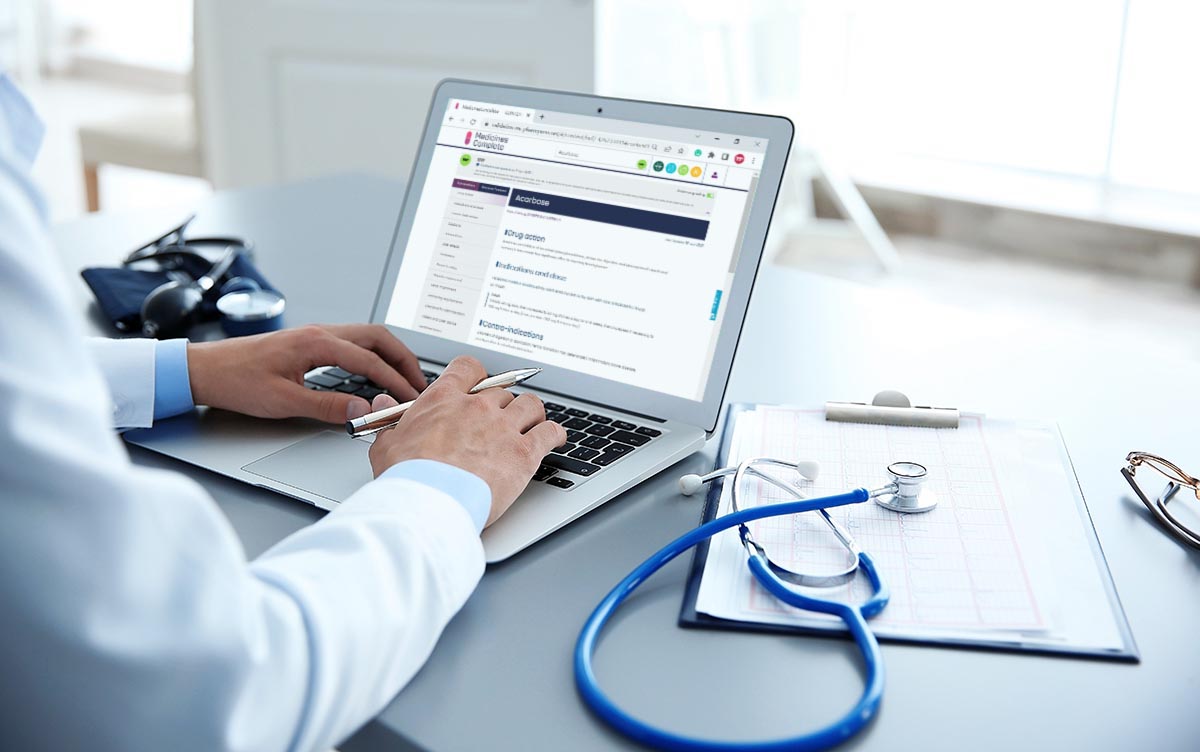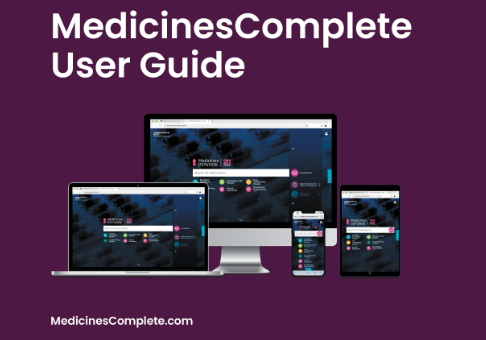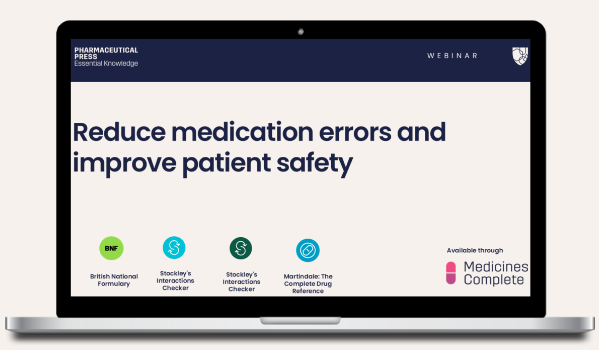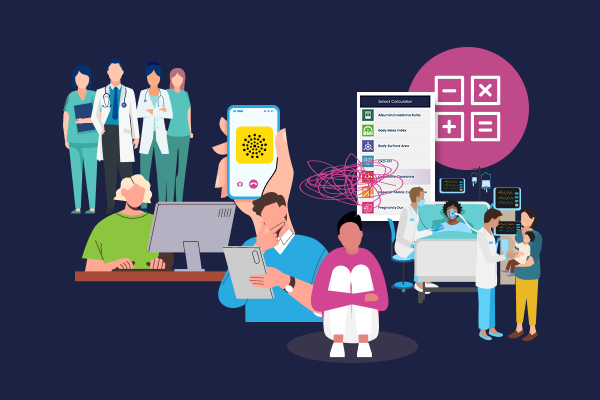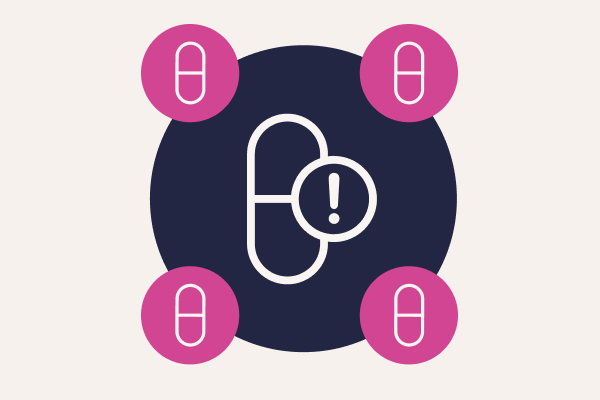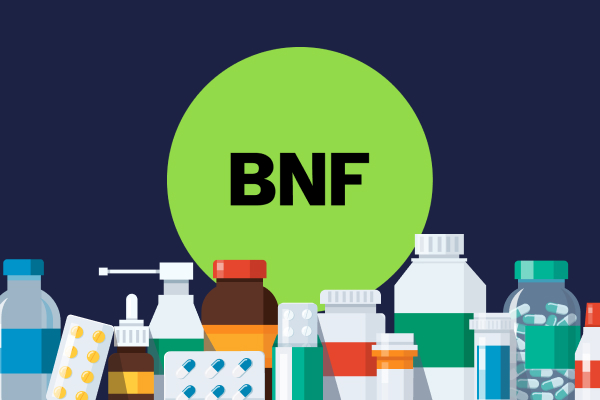What is pharmacovigilance?Pharmacovigilance (PV) is the term used to describe the practice of monitoring the effects of medicines after they have been licensed for use, with the aim of identifying and evaluating any adverse drug reactions (ADRs).²
Medication safety and good pharmacovigilance practice (GPvP)
Pharmacovigilance (PV) is the term used to describe the practice of monitoring the effects of medicines after they have been licensed for use, with the aim of identifying and evaluating any adverse drug reactions (ADRs).²
The drug development process is long and difficult, and new medicines go through various phases of testing and monitoring before some are finally licensed for use. However, this is far from the end of the journey. It’s imperative to ensure that all medicines – newly licensed or otherwise – are carefully monitored for ongoing safety for the duration of their time in healthcare practice.¹
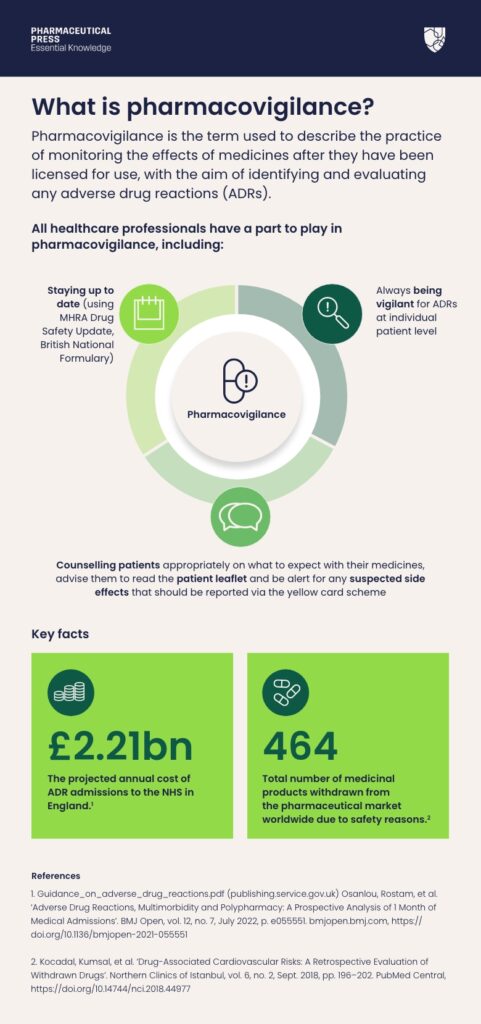
What is pharmacovigilance?
Please complete the form at the bottom of this article to request a complimentary trial of MedicinesComplete.
Pharmacovigilance is a process-driven activity that is designed to help reduce risks and determine which adverse reactions cross the line of a drug’s efficacy – that is, that the risks outweigh the benefits associated with taking the drug. In short, it is critical to the safe use of medicines.
Pharmacovigilance, or managing the risks associated with the use of medicines, demands close and effective collaboration between key players including medicines regulators, the pharmaceutical industry, health professionals, patients and the public. Everyone involved in the development, regulation and use of medicines, including patients and carers, has a part to play.
Why is pharmacovigilance important?
The aim of creating new drugs is to benefit patients by offering improved health and quality of life. Therefore, it’s essential to ensure that the advantages of taking such medicines significantly outweigh any negative effects that the drugs cause.
No medicine is completely safe.²
ADRs are common in clinical practice; they can affect any body system and can range in severity from mild to serious or indeed be fatal. The terms “side effects” and ADRs are used interchangeably in practice.
The most common classification of ADRs is to separate them into Type A or Type B reactions. Type A reactions result from an exaggeration of a drug’s normal pharmacological actions when given at the recommended therapeutic dose and are usually reversible on reducing the dose of the drug or withdrawing treatment altogether.²,³ In contrast, Type B reactions cannot be predicted from the known pharmacology of the drug.
Although every effort is made to ensure the safety and efficacy of new drugs throughout the drug development process, clinical trials generally involve at most a few thousand carefully selected patients, and rare ADRs may not be evident until hundreds of thousands of people have used them. In addition, in everyday life, medicines are not used under the strict conditions of clinical trials – for example, they may be taken by millions of patients across a range of age groups, who may also be taking other medicines, and who have varied lifestyles (e.g. smoking, drug or alcohol misuse) and other complex health conditions.
Once drugs go to market and reach a much wider patient pool, there is a greater opportunity to evaluate and assess ADRs. Data collected from post-marketing surveillance can include many thousands of patients using the medicine over a longer period of time, enabling any rare ADRs to be quantified and studied.
In rare cases, medicines may need to be withdrawn if there are serious safety concerns, or if the risks of the medicines outweigh the benefits that they can offer the patient.
The impact of adverse drug reactions
The health and financial implications of ADRs can be significant. The World Health Organization’s strategic framework, “Medications without harm” aims to reduce severe avoidable medication-related harm globally by 50%. In this framework preventable adverse drug reactions are considered to be medication errors.
An estimated 237 million medication errors occur in the NHS in England every year.
ADRs can³
- Adversely affect patients’ quality of life and cause patients to lose confidence in the healthcare system
- Contribute to increased cost of patient care, and can lengthen hospital stays
- Mimic disease, resulting in unnecessary and costly investigation and delays in treatment.
In a recent epidemiological study, Osanlou and colleagues carried out a prospective analysis of medical admissions due to adverse drug reactions in a Liverpool teaching hospital. They found that up to 17% of hospital admissions in the UK are due to ADRs.⁴ Their study suggests that the prevalence has increased in recent years, adding to the burden of hospital admissions.
The projected annual cost of ADR admissions to the NHS in England is £2.21bn⁴
Around 40% of these ADRs were assessed as avoidable or potentially avoidable.⁴ 86.2% of these ADRs were ‘type A’ reactions, meaning that they were the result of the expected pharmacological action of the medicine, making them more predictable and potentially avoidable. The most commonly implicated medicines included diuretics, steroid-based inhalers, anticoagulants, proton pump inhibitors (PPIs), antiplatelets, chemotherapy agents, antihypertensives, opiates and antidepressants/antipsychotics.
The study authors recommend that future efforts are targeted at reducing these type A reactions by employing strategies such as:
- Stratifying patients by susceptibility to ADRs before a medicine is prescribed using key information such as comorbidities, concomitant medications and renal and hepatic function – particularly older patients who may have multiple conditions that require drug therapy. Checking co-morbidities is particularly important since a total of 29.4% of ADRs in this study were potentially caused by drug interactions
- Utilising pharmacogenomic testing to identify patients at high risk of ADRs to inform medication choice and dosing
- Close monitoring of patients at higher risk of ADRs, including blood testing and clinical reviews.
Stopping or reducing the dose of a medicine, known as deprescribing, in the event that potential harm outweighs benefits has also been proposed as an important tool in reducing ADRs.
Benefits of pharmacovigilance
Aside from ensuring greater safety for individual patients, other benefits of pharmacovigilance include:
- A better understanding of a drug’s safety profile, which can inform a health professional’s decision to prescribe that medication
- The ability to identify any potential issues with a medicine that could lead to its abuse or diversion (e.g. opioid analgesics, pregabalin and gabapentin)
- The ability to identify potential drug causes of serious injury or death, which could prevent future complaints or litigation.
Approaches to pharmacovigilance
Post-marketing drug safety surveillance, also known as simply post-marketing surveillance or PMS, is essential. It involves continuous monitoring of medicines after they have been through all three phases of clinical trials, once they reach the market. The aim is to detect, assess and understand side effects so that, where possible, they can be prevented. It starts the moment that a drug is licensed and continues for the entire period that the medicine is available for patient use.⁵,⁶
There are several types of PMS. The most significant is spontaneous reporting of cases of suspected ADRs to regulatory agencies – for example, using the UK MHRA Yellow Card reporting scheme.³ The primary purpose of this is to generate new signals of ADRs so that future adverse events can be avoided.
Safety signals in pharmacovigilance
A safety signal in pharmacovigilance refers to information on a new or known ADR that may be caused by a drug and requires further investigation.³ Signals can come from a range of sources, from spontaneous and routine reports to publications in the scientific literature. A safety signal doesn’t mean that a medicine has caused the reported ADR, but the evaluation of safety signals is part of routine pharmacovigilance and crucial for ensuring that regulatory authorities have the latest information on any drug’s benefits and risks.
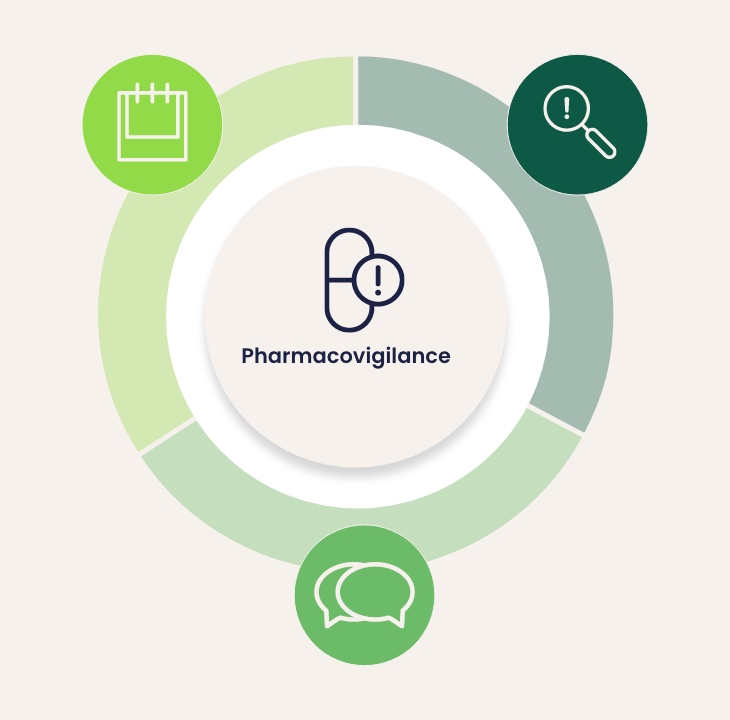
All health professionals have a part to play in pharmacovigilance.
How the MHRA monitors the safety of medicines
As we know, using medicines in the real world, away from the strict parameters of a clinical trial setting, can be very different. It is critical that potential side effects are investigated as quickly as possible so that appropriate action can be taken.
The MHRA monitors the use of medicines in everyday practice to identify previously unreported ADRs, or changes in the pattern of known ADRs that only appear once the drug is on the market. By understanding these, it’s possible to assess the risks and benefits to determine what action, if any, is needed to enable them to be used safely.⁷,⁹
The MHRA supplies anonymised case details of reported ADRs to pharmaceutical companies so that they can perform safety analyses on the medicines they produce. They also publish cumulative listings of all ADRs received, called the interactive Drug Analysis Print. These can be useful in answering enquiries on suspected ADRs from both health professionals and the public.⁸
In addition, the MHRA provides up to date information to health professionals so that they can have open discussions with patients, parents and carers and together make informed decisions about any drugs that are prescribed. Both health professionals and patients/carers can also be vigilant in detecting suspected ADRs and can report them promptly using the Yellow Card Scheme.⁸
The MHRA Yellow Card scheme
The MHRA Yellow Card scheme can be used to report suspected side effects to the MHRA.⁹ The scheme relies on voluntary reporting by health professionals and the public, including patients, parents and caregivers.
Reports can be made for ADRs relating to:
- Vaccines
- Blood factors and immunoglobins
- Herbal medicines
- Homeopathic remedies
- All medical devices on the UK market
- Defective/low quality medicines
- Fake medicines or medical devices
- Nicotine-containing electronic cigarettes and refill containers.
The MHRA is particularly interested in receiving Yellow Card reports of suspected ADRs:
- In children and patients over the age of 65
- In patients on biological medicines
- To vaccines
- Associated with delayed drug effects and interactions
- To complementary remedies including homeopathic and herbal products.
The Black Triangle Scheme is a system to alert health professionals and patients to medicines that are being monitored particularly closely by regulatory authorities in the European Union.⁶,⁷ The scheme covers newly marketed medicines, new routes of administration, new delivery systems, or when an established medicine is being used in a new patient population, These medicines are marked by an inverted Black Triangle, which is displayed in the patient information leaflet and in the key prescribing information for health professionals called the summary of product characteristics:
▼ This medicinal product is subject to additional monitoring
These medicines are generally under additional monitoring requirements because there is relatively little information about their safety from clinical trials. The Black Triangle doesn’t mean that the medicine isn’t safe.⁶
Any suspected ADR that occurs with these medicines should be reported using the MHRA Yellow Card Scheme so that emerging information can be collected and analysed.
The MHRA assesses the Black Triangle status of a product after two years on the market, but the symbol is not removed until the safety of the drug is well established.⁶
For established medicines and vaccines, all serious suspected ADRs should be reported, even if the effect is well recognised.
Other sources for monitoring the safety of licensed medicines
In addition to the Yellow Card Scheme, the MHRA uses an extensive range of information sources for its pharmacovigilance activities, including⁸
- Clinical and epidemiological studies
- Worldwide published medical literature
- Pharmaceutical companies
- Other regulatory authorities worldwide
- Morbidity and mortality databases.
Information from these sources is carefully screened. It may identify unexpected ADRs, indicate that certain side effects occur more commonly than previously believed, or that some patients are more susceptible to particular side effects than others. Such findings can lead to changes in the marketing authorisation of medicines, dosage changes and the inclusion of specific warnings of side effects in the product information.⁷ Alternatively, when necessary the MHRA may also take specific actions to ensure that a drug is only used in a way that maximises safety, such as restricting the indications for its use, or changing its legal status, such as from over-the-counter to prescription only.⁸
In rare cases, to protect patients, it may be necessary to remove the medicine from the market altogether.
Over the period 1950 to 2017 a total of 464 medicinal products were withdrawn from the pharmaceutical market worldwide due to safety reasons.¹⁰
All health professionals have a part to play in pharmacovigilance, including:
- Always being vigilant for ADRs at individual patient level
- Counselling patients appropriately on what to expect with their medicines, advise them to read the patient leaflet and be alert for any suspected side effects that should be reported via the yellow card scheme
- Staying up to date (MHRA Drug Safety Update, British National Formulary etc.). Regular drug safety updates, such as the update on the use of fluoroquinolone antibiotics published in January 2024, will help ensure that healthcare providers have the latest information available when prescribing medications, which could help to reduce the likelihood of ADRs.
With understanding and vigilance, it may be possible to limit the number of ADRs and reduce the burden they place on the healthcare system.
Discover how accessible and comprehensive ADR information in MedicinesComplete supports health professionals to embed pharmacovigilance in their day-to-day practice.
Trial form
Please complete the form below to request a complimentary trial to knowledge products through MedicinesComplete.
References
1. European Medicines Agency: Pharmacovigilance: Overview [Internet]. [cited 2024 Jun 30]. Available from: https://www.ema.europa.eu/en/human-regulatory-overview/pharmacovigilance-overview.
2. Cuthbert M, Chapter 1, Introduction to adverse drug reactions and pharmacovigilance. In Adverse Drug Reactions 3rd edition, Pharmaceutical Press 2022 (Lee A and Cuthbert M, editors).
3. MHRA Guidance on adverse drug reactions. Available from: Guidance_on_adverse_drug_reactions.pdf (publishing.service.gov.uk)
4. Guidance_on_adverse_drug_reactions.pdf (publishing.service.gov.uk) Osanlou, Rostam, et al. ‘Adverse Drug Reactions, Multimorbidity and Polypharmacy: A Prospective Analysis of 1 Month of Medical Admissions’. BMJ Open, vol. 12, no. 7, July 2022, p. e055551. bmjopen.bmj.com, https://doi.org/10.1136/bmjopen-2021-055551.
5. National Institute for Health and Care Excellence: Adverse drug reactions [Internet]. [cited 2024 Jun 30]. Available from: https://cks.nice.org.uk/topics/adverse-drug-reactions/.
6. The Association of the British Pharmaceutical Industry: Drug safety (Pharmacovigilance) [Internet]. [cited 2024 Jul 1]. Available from: https://www.abpi.org.uk/careers/working-in-the-industry/research-and-development/drug-safety-pharmacovigilance/.
7. The Black Triangle Scheme [Internet]. [cited 2024 Jul 1]. Available from: https://assets.publishing.service.gov.uk/media/5a7d5eeae5274a02dcdf419f/Black_Triangle_Scheme_-_new_medicines_and_vaccines_subject_to_EU-wide_additional_monitoring.pdf.
8. MHRA: Pharmacovigilance – how the MHRA monitors the safety of medicines [Internet]. [cited 2024 Jul 2]. Available from: https://assets.publishing.service.gov.uk/media/5feefb56d3bf7f089a791a2c/Pharmacovigilance___how_the_MHRA_monitors_the_safety_of_medicines.pdf.
9. The Yellow Card scheme: guidance for healthcare professionals, patients and the public – GOV.UK (www.gov.uk).
10. Kocadal, Kumsal, et al. ‘Drug-Associated Cardiovascular Risks: A Retrospective Evaluation of Withdrawn Drugs’. Northern Clinics of Istanbul, vol. 6, no. 2, Sept. 2018, pp. 196–202. PubMed Central, https://doi.org/10.14744/nci.2018.44977.

